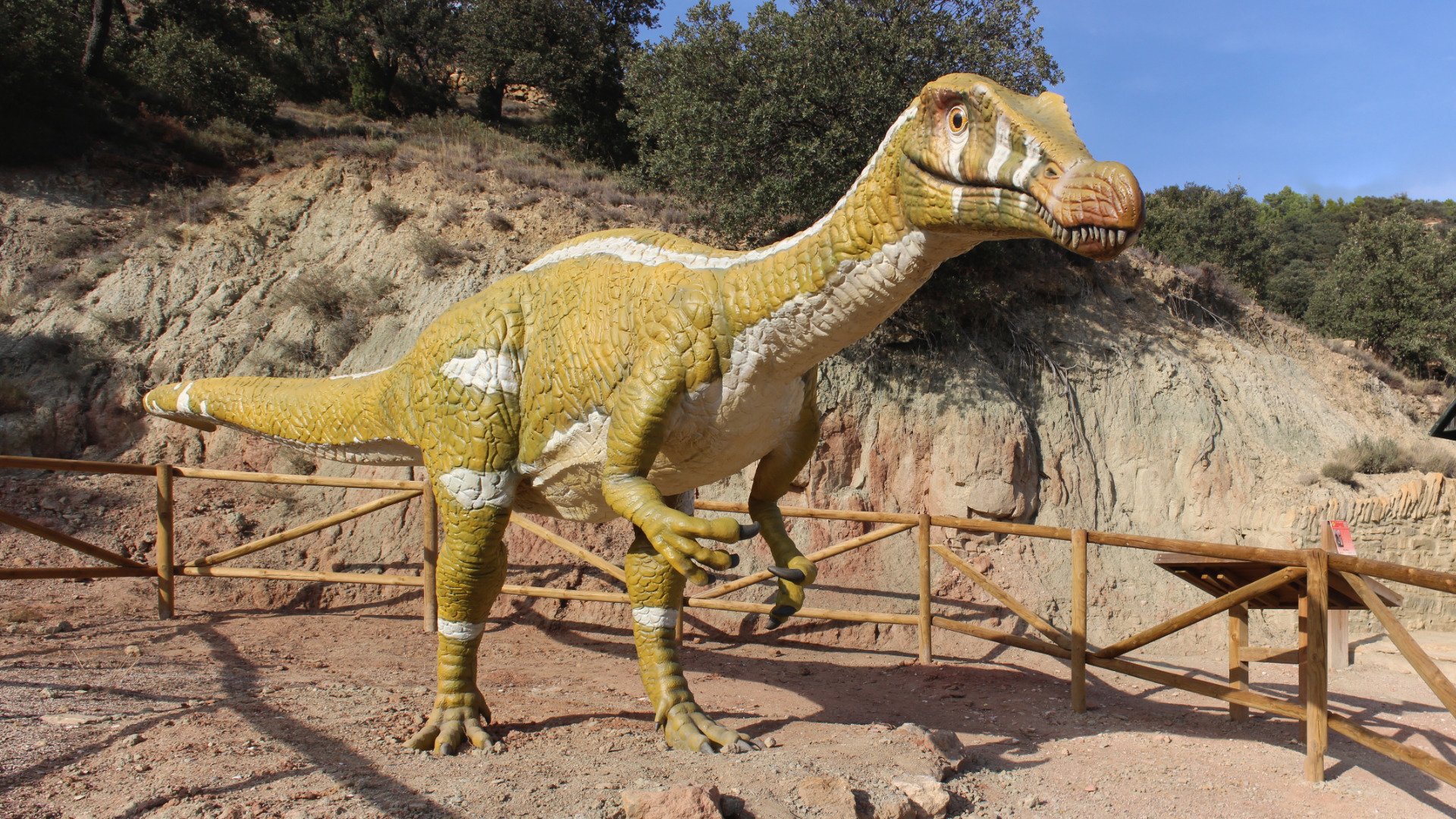
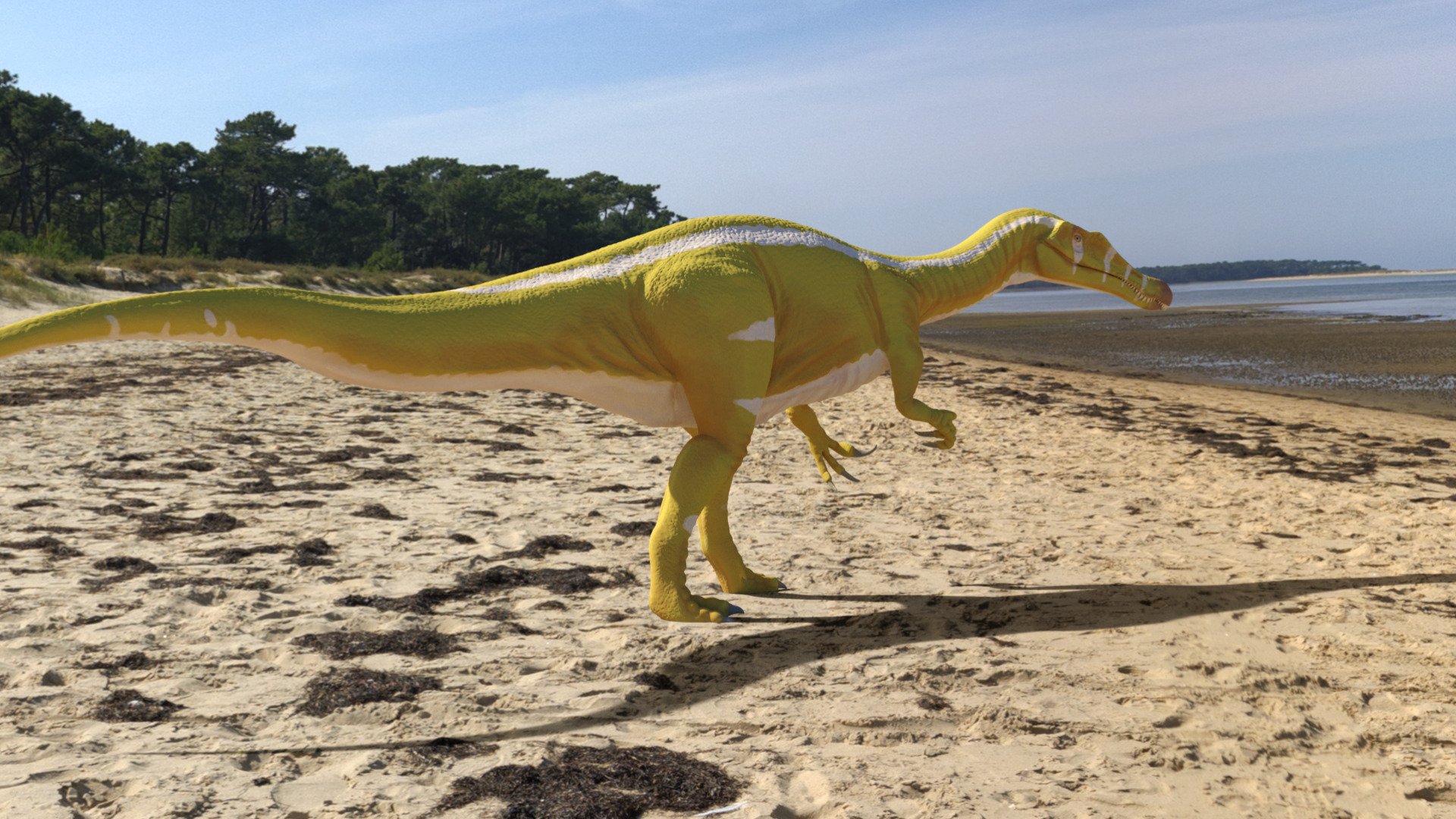
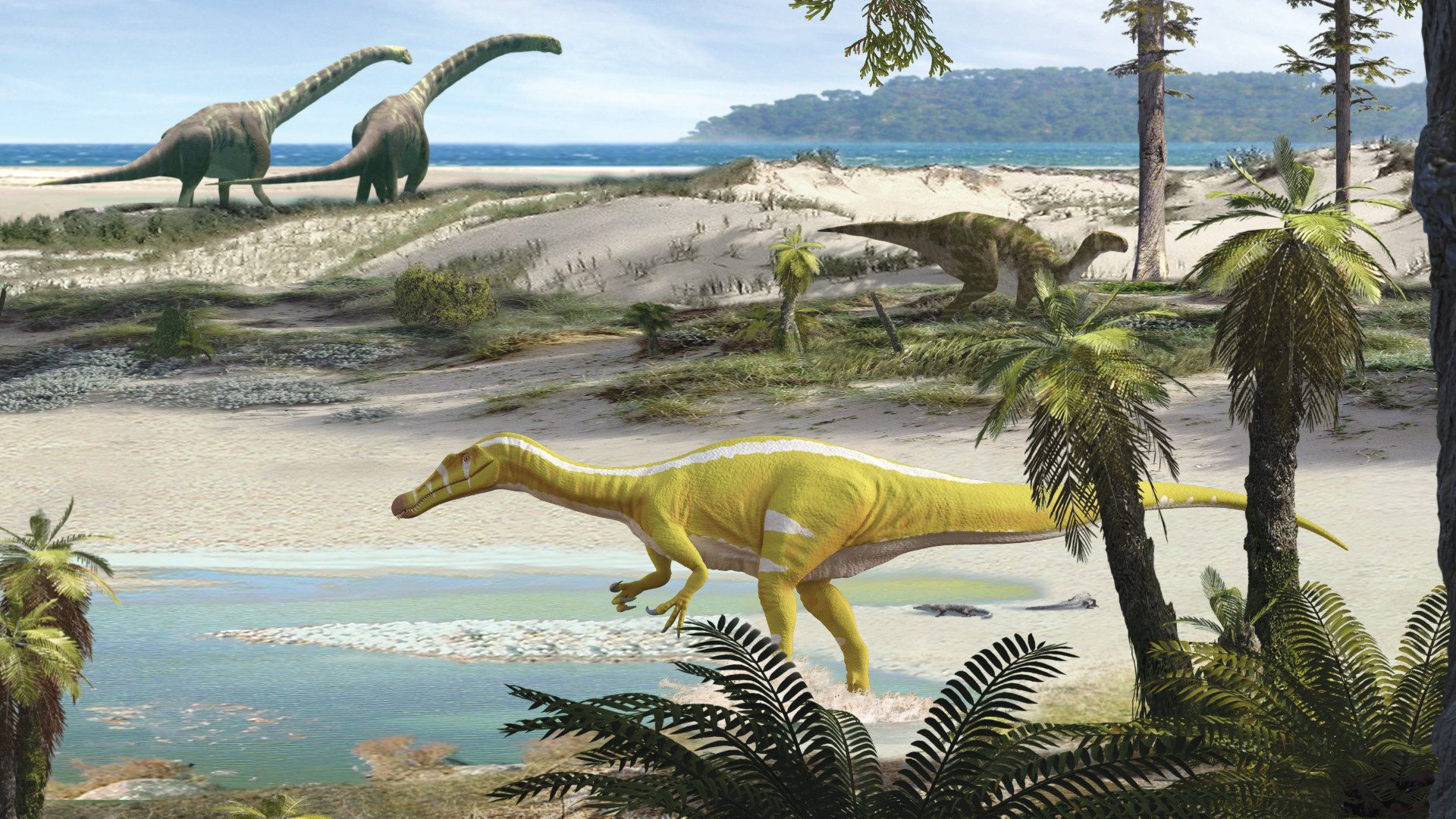
Protathlitis cinctorrensis, a dinosaur as a tribute to Villarreal CF
Villarreal CF has a dinosaur, Protathlitis cinctorrensis. Researched from the ‘Grup Guix’ from Vila-real, the Jaume I University in Castelló, and the University of Valencia discovered a new species of dinosaur in Cinctorres (Castellón) and dedicated it to the Yellows. The feat was publsihed on 18th May 2023 in the prestigious British journal Scientific Reports, the fifth most cited journal in the world in the area of Multidisciplinary Sciences, in relation to the discovery of the fossils of a new genus and species of spinosaurid dinosaur.
This new genus of dinosaur lived in the province about 127 million years ago. The holotype was identified based on an almost complete right maxilla and five caudal vertebrae. It is an adult specimen about 11 metres long and three metres high, weighing about two tonnes. It was a carnivorous species, with an elongated nose and numerous conical teeth, that moved with on two hind legs and used its hands to capture prey. The bones were found at the ANA site in Cinctorres, being the third dinosaur species identified in the Formación Arcillas in Morella, belonging to the Early Cretaceous, and the fourth in the province of Castellón.
When it came to naming the new dinosaur, the research team wanted to pay tribute to Villarreal CF for its centenary, for the Europa League title and for its collaboration and involvement with the province. That is why they decided to dedicate the name of the genus in their honour: ‘Protathlitis cinctorrensis‘. Protathilitis, which means ‘champion’ in Greek as a reference to the feat achieved in Gdansk; and cinctorrensis for the location where the fossils were found.
Villarreal CF showed its deepest and most profound gratitude for such an honour to the ‘Grup Guix’ from Vila-real, the Jaume I University in Castelló nand the University of Valencia and was proud to receive this honour, which reinforces the club’s sense of belonging and identification with the province of Castellón. ‘Protathlitis cinctorrensis‘ is now part of Villarreal CF’s history, present and future.
The official presentation of the new dinosaur species took place on 19th May 2023 at the El Ceramista Restaurant at the Estadio de la Cerámica. It wsd attended by the president of the club, Fernando Roig; the of Cinctorres, Mireia Mestre; and the four geologists who led the research: Andrés Santos-Cubedo and Sergi Meseguer from the Jaume I University in Castellón, Carlos de Santisteban from the University of valencia and Begoña Poza from the ‘Grup Guix’ from Vila-real.
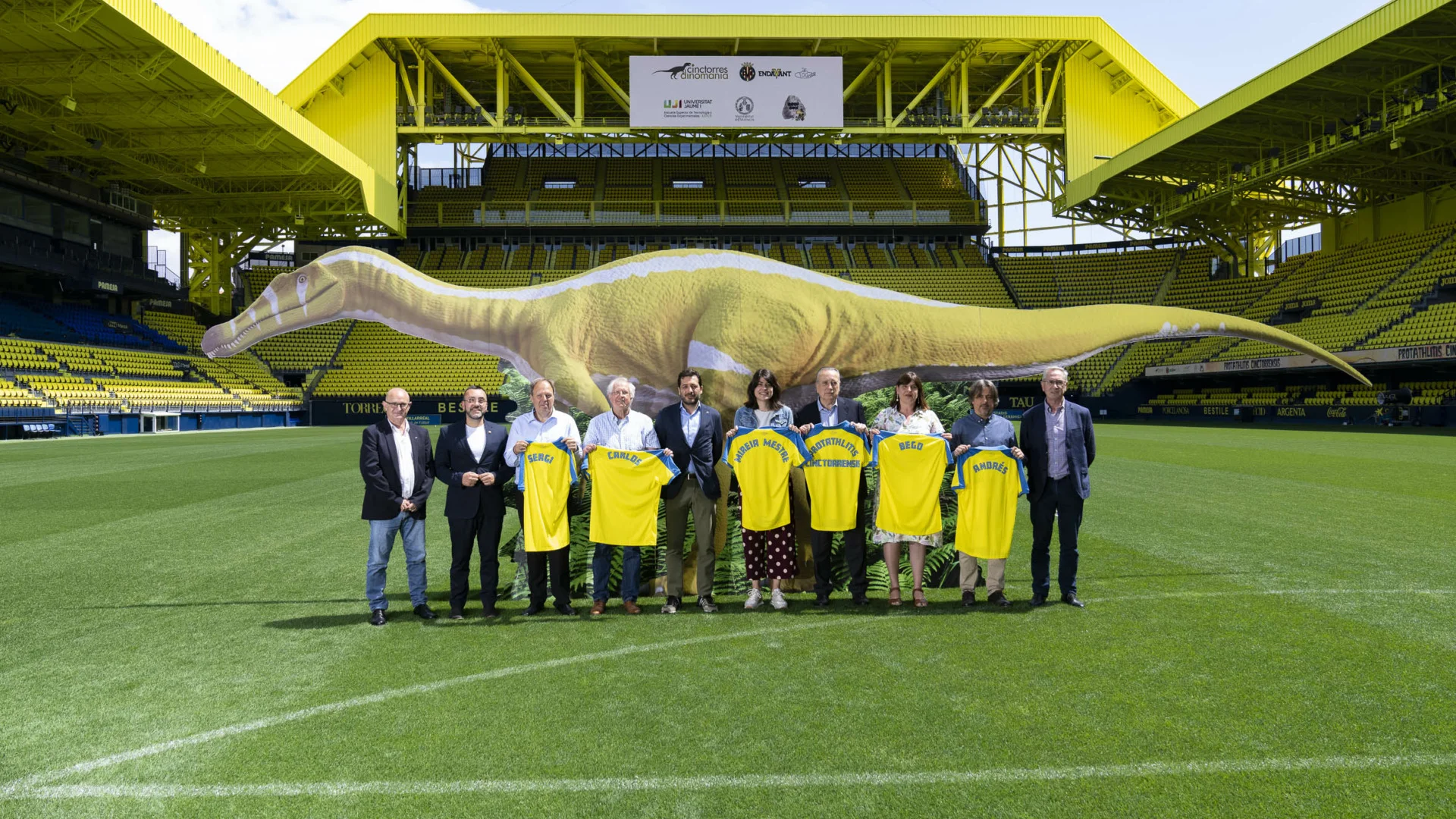
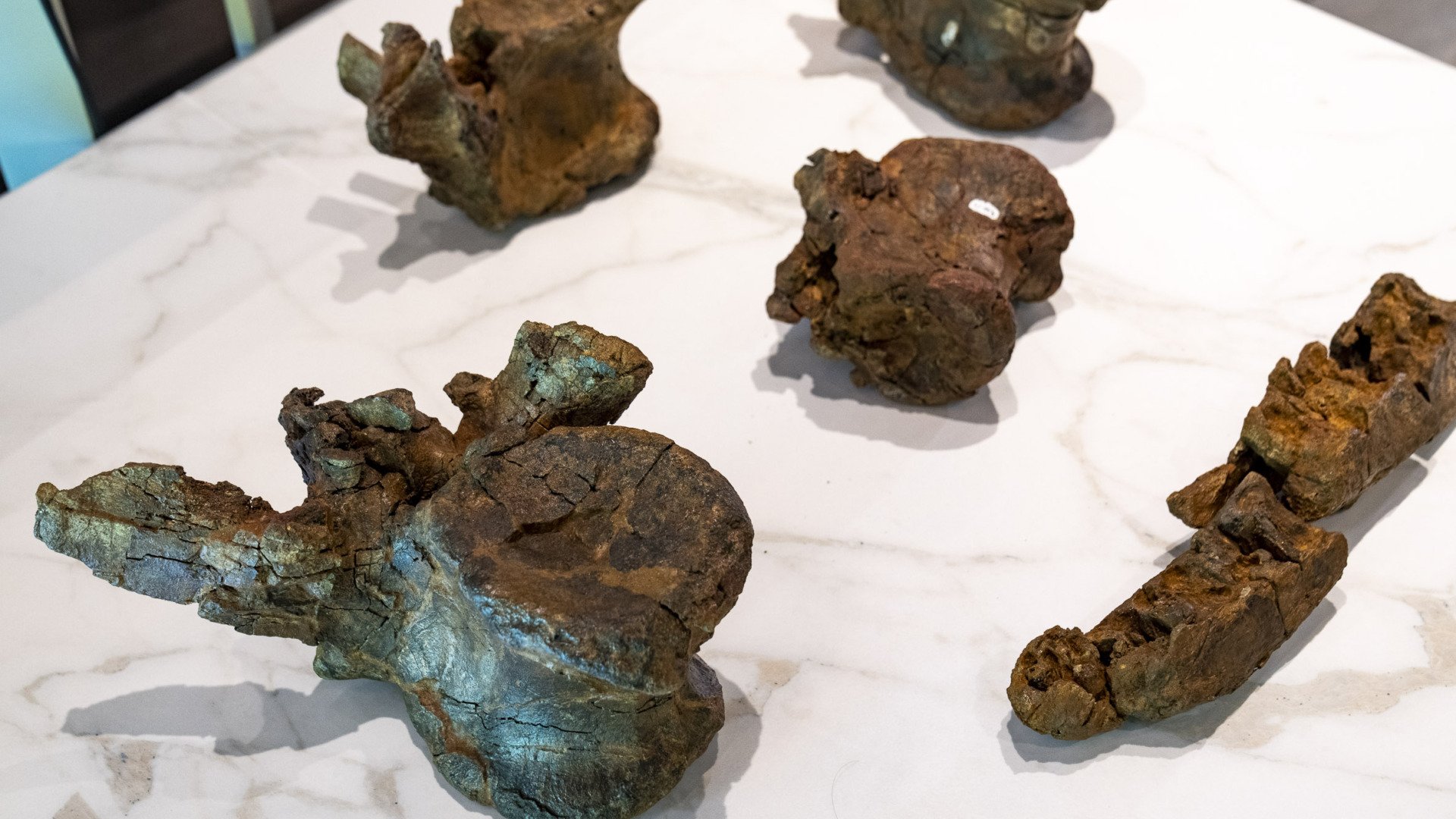
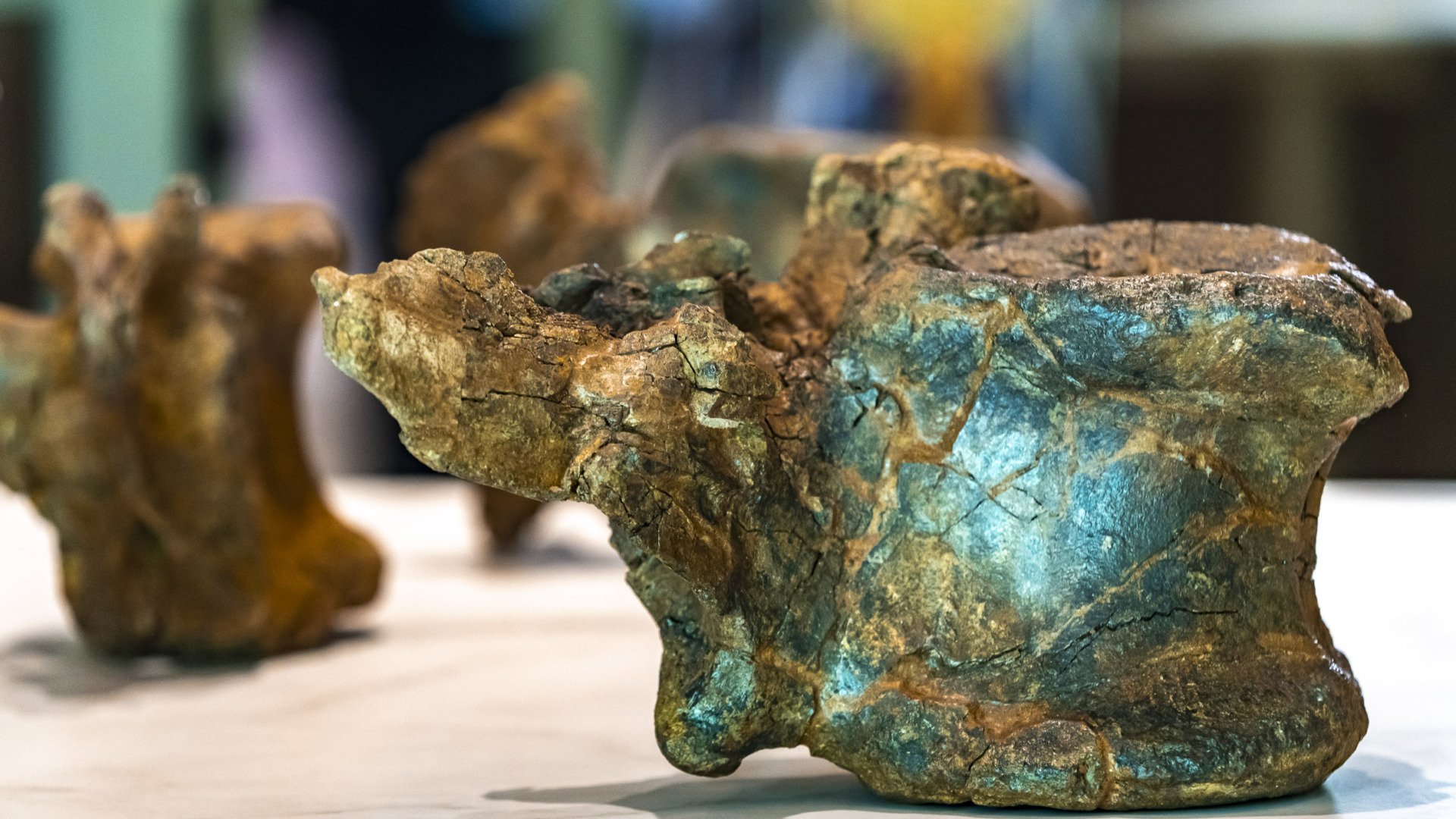
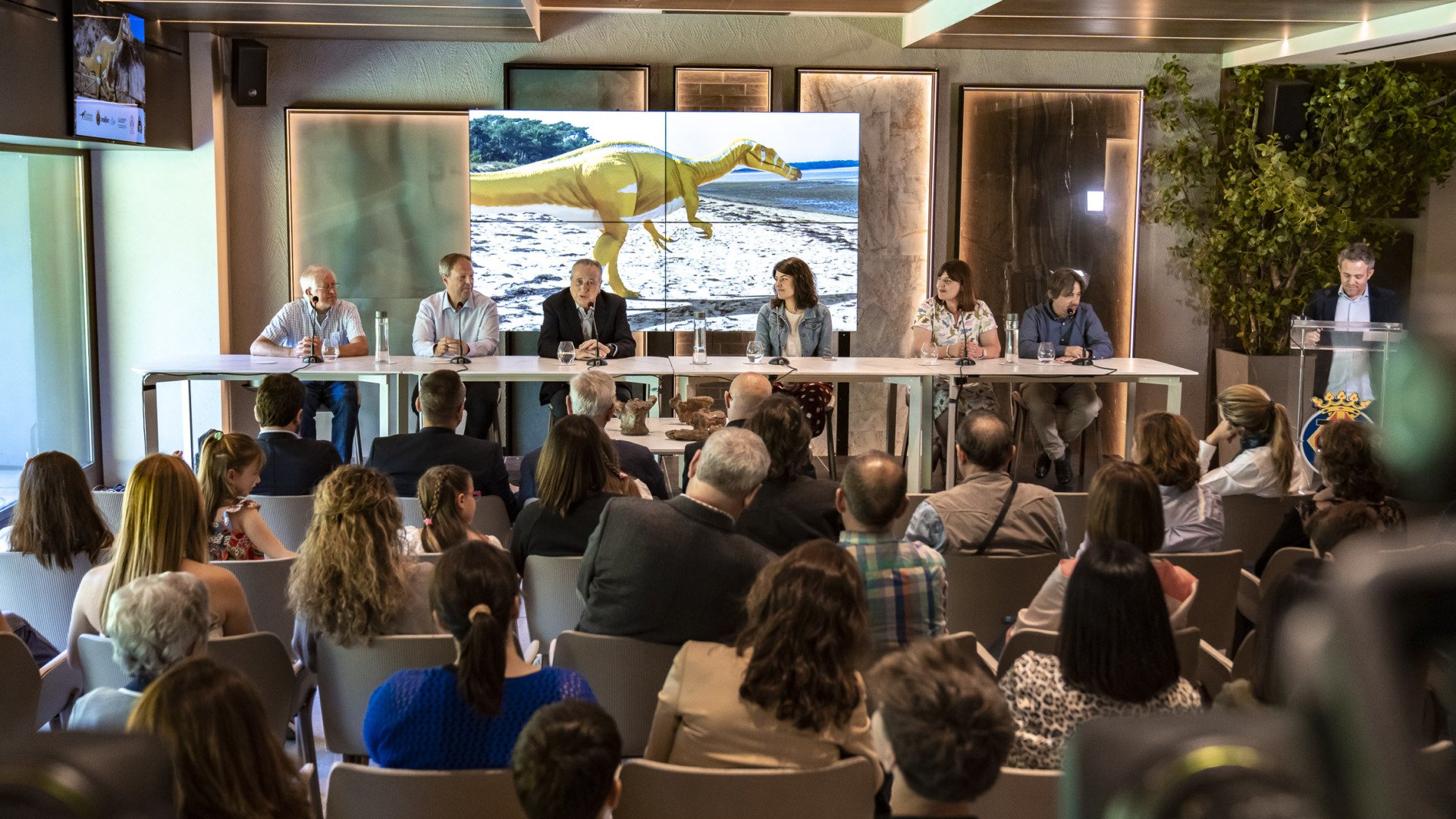
Competition in the schools of the province to give it a nickname
Villarreal CF, in order to promote the discovery and its diffusion, will hold a competition in the 2022/23 academic year among the primary schools in the province of Castellón that wish to take part in order for them to produce a work related to the dinosaurs that inhabited the province and, in addition, to propose three possible nicknames for the dinosaur. The club will finally choose a winning nickname and award a prize to the corresponding school.
The new species is dedicated to Villarreal CF
1) Protathlitis cinctorrensis new genus and species of spinosaurid dinosaur.
2) Protathlitis cinctorrensis is the third dinosaur species identified in the Morella Clay Formation (Early Cretaceous).
3) Protathlitis cinctorrensis is a key dinosaur for understanding the origin and evolution of spinosaurids in Europe.
4) According to the results of the study, Protathlitis cinctorrensis is a basal baryonychine, which is closely related to the dinosaur Baryonyx walkeri.
5) The Cinctorres spinosaurids inhabited areas close to coastal zones..
Lineups
Dinosauria, theropods, tetanurids, spinosaurids, barionychines, Protathlitis cinctorrensis gen. et sp. nov.
Meaning of the name: Protathlitís (from the Greek, Πρωταθλητής)-“champion”, in reference to the UEFA Europa League title won by Villarreal C.F. in 2021 and as a tribute to the club’s centenary celebrated in 2023. Cinctorrensis species dedicated to Cinctorres and its inhabitants, where the dinosaur fossils were found.
- Classification: baryonychid spinosaurid.
- Description: Santos-Cubedo, fro Santisteban, Poza & Meseguer, 2023.
- Found in: Cinctorres, Castellón, Spain.
- Age: Lower Cretaceous (Late Barremian), between 126m and 127m years ago.
- Dimensions: between 10 and 11 metres in length.
- Weight: about 2 tonnes.
- Diet: carnivore.







